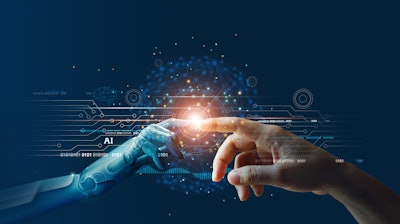
Industry 4.0 is transforming the manufacturing world as companies take advantage of new smart connectivity technologies to optimize their factories. In the next four years alone, these new technologies will help manufacturers and suppliers add nearly $4 trillion in value, one recent report predicted.
Machine learning in particular has vast potential, allowing industrial engineers to go beyond traditional analytical tools and extract game-changing insights from the voluminous amounts of data they're often already collecting on the factory floor. But amid all the hype, it's crucial to understand exactly what machine learning can do, and what it can't.
If you've already seen machine learning applied in a maintenance context, chances are that it was being used for anomaly detection—in other words, highlighting rare events, with the idea being predicting breakages before they happen. Predictive maintenance is a common use case for machine learning, because it seems so intuitive. If you know in advance when something will break down, you should be able to save a lot of money and time that you'd otherwise spend doing costlier reactive maintenance.
But there's one problem with this technique: it doesn't work reliably.
Anomaly detection works by dumping all your historical and real-time data for a given machine into the software, so the machine learning models can learn the machine's "normal" behavior. When the machine exceeds the specified range—for example, spiking to a temperature of 250 degrees, in contrast to the usually observed 200—the software sends you a notification that something isn't right.
However, factories are complex. Machine temperature fluctuates based on hundreds of factors, from production volume to the season. This has major implications for machine learning models. They often make mistakes when learning "normal" behavior, resulting in numerous false positives.
The biggest cost of a false positive (in addition to wasting your time) is that it erodes trust in the technology. In extreme cases, this can result in a cry wolf scenario like the BP leak, which happened because there were so many false positives, the engineers shut down the alarms.
Seeing the Big Picture
While predicting events might sound tempting, you'll get sounder results by using explainable machine learning to forecast trends. Imagine if the weather app told you: Today, the pressure is much higher than the seasonal average, so today you can expect an abnormal weather event.
Compare that with the typical weather forecast: Next Monday, we're likely to see light rain, based on various factors such as temperature and pressure.
Which is more useful?
Explainable machine learning works the same way. By analyzing trends over time, these models can predict when certain machines will need maintenance, and even reveal how to prolong their lifetime.
After detecting erratic sensor data from a heat exchanger, for instance, it might suggest that the device will need to be serviced in six weeks' time. If you have a scheduled maintenance shutdown in two weeks, you know that the machine can be safely ignored until the next shutdown, letting you focus on other high-priority tasks.
You can also use machine learning to figure out how to extend a device's lifetime, delaying the need for costly repairs. In a typical factory, many factors contribute to degradation. By using explainable machine learning to see what makes specific equipment age faster, you can take action to prolong its usefulness.
And while anomaly detection methods typically rely on a mysterious black box algorithm, explainable machine learning allows you to take advantage of domain experts on the factory floor, who can tell the software which trends to forecast based on their experience. The software can then analyze these trends over time and make predictions that relate directly to engineers' needs and priorities.
Machine learning has vast potential to transform daily maintenance operations. It will help you save time, money, and effort and understand the interconnected nature of your factory operations, which will be increasingly critical as we move towards a smartly connected future.
Berk Birand is the Founder and CEO of Fero Labs.






















